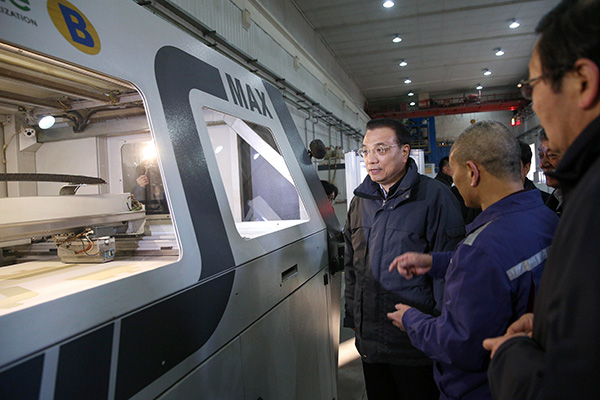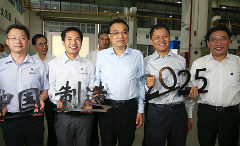New growth drivers key in pushing ahead industrial upgrades
2017-04-04
Xinhua
Premier Li Keqiang, who has repeatedly called for industrial upgrading with new driving forces on many occasions, again reiterated the importance of the transformation of old and new growth drivers at this year’s two sessions and pointed out that its development relies on entrepreneurship and innovation.
During a discussion with the delegation from Shandong province during last month’s two sessions, Premier Li said he hoped Shandong would continue to lead the transformation of old and new drivers. In talks with the delegation from Anhui province, he also stressed the focus on supply-side structural reform to accelerate the transformation of driving forces.
With Premier Li’s continuous efforts and encouragement in improving the manufacturing industry with new drivers during his domestic inspections and meetings, traditional enterprises are making further progress in pursuing the innovation-driven development strategy.
Statistics from the State Administration of Taxation show that in 2016, emerging industries represented by new driving forces had become a new growth point for taxation and had also played a decisive role in the restructuring of traditional industries with old growth drivers.
The Premier praised the Flying Pigeon Cycle Manufacture for forging “hundred-year-old brands” among China’s traditional enterprises during a visit to one of their stores in Tianjin last year.
The company has increased the amount of tax revenue it contributes to the government by 37 percent in the last two years.
While another bicycle accessory supplier has also increased its contribution to tax revenue nearly 50 times in 2016 on the back of the booming shared bicycle services.
Meanwhile, Kocel Machinery in Yinchuan, which won praise from Premier Li in Feb 2016 for upgrading its traditional manufacturing factories to new 3D printing workshops, has now built an intelligent factory with a brand-new digital production line.
“China must aim to upgrade its manufacturing by embracing emerging technology such as big data, cloud computing, the internet of things and 3D printing”, the Premier said at the executive meeting of the State Council on March 5, 2016.
At the State Council’s first executive meeting this year, Premier Li urged all government departments to improve market supervision and provide better services to allow new forms of business to drive the transformation of traditional industries.
Institute of International Finance chief executive Timothy Adams compared China’s economy to a “hybrid car”. The traditional economic driving forces were like “more traditional gas-guzzling form of propulsion”, while the new driving forces were like a “greener electric engine”, according to Adams.
“Over time, the hybrid will increasingly provide the needed propulsion (for China’s economic growth),” Adams said.
As Premier Li pointed out, replacing old drivers of growth with new ones is a process of painful adjustment. But it is, at the same time, an upgrading process with great promise.
“We just have to get through this process, and we can, without question, reinvigorate the economy and ensure its dynamic growth,” the Premier said.



